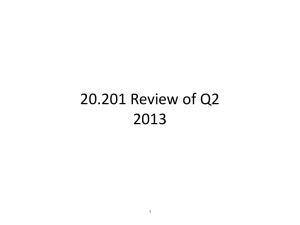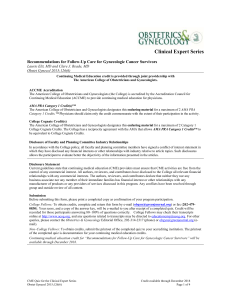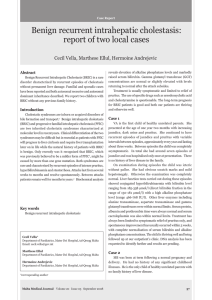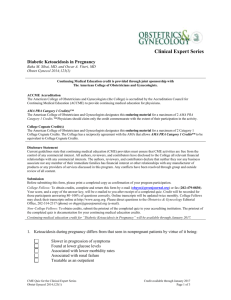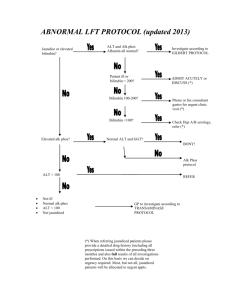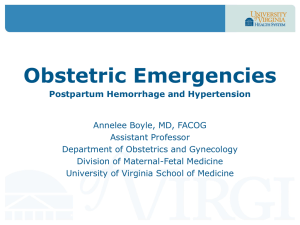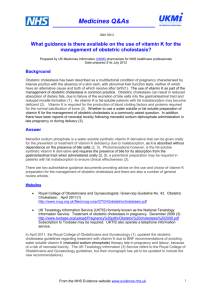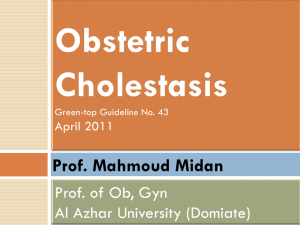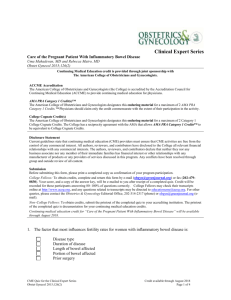Intrahepatic Cholestasis of Pregnancy
advertisement
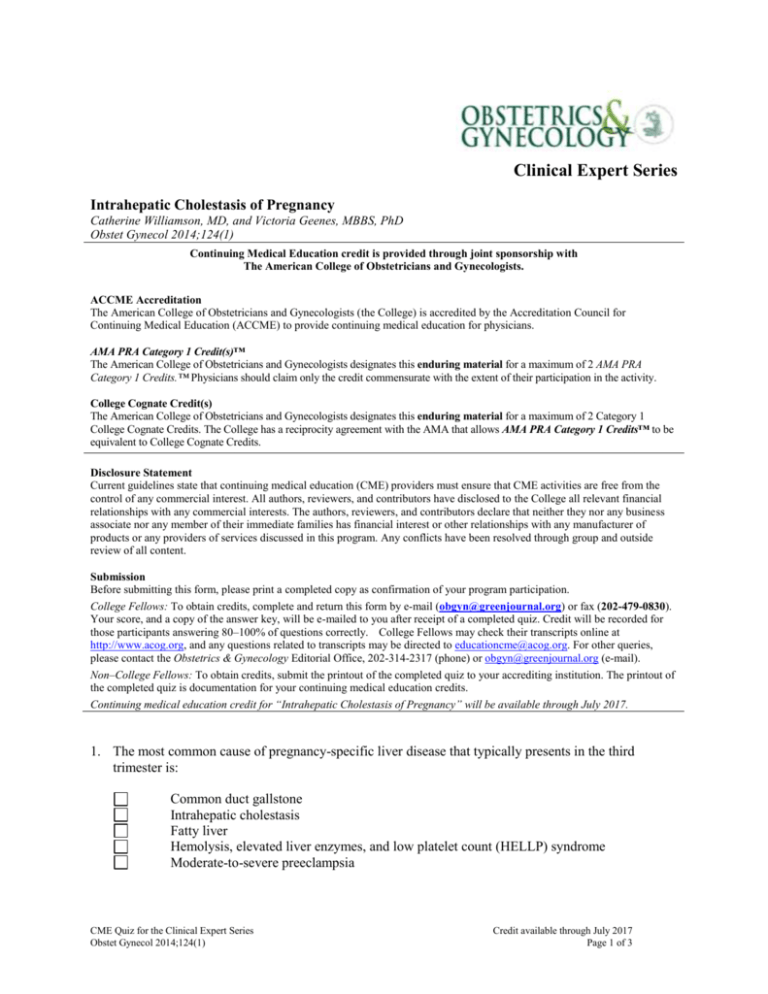
Clinical Expert Series Intrahepatic Cholestasis of Pregnancy Catherine Williamson, MD, and Victoria Geenes, MBBS, PhD Obstet Gynecol 2014;124(1) Continuing Medical Education credit is provided through joint sponsorship with The American College of Obstetricians and Gynecologists. ACCME Accreditation The American College of Obstetricians and Gynecologists (the College) is accredited by the Accreditation Council for Continuing Medical Education (ACCME) to provide continuing medical education for physicians. AMA PRA Category 1 Credit(s)™ The American College of Obstetricians and Gynecologists designates this enduring material for a maximum of 2 AMA PRA Category 1 Credits.™ Physicians should claim only the credit commensurate with the extent of their participation in the activity. College Cognate Credit(s) The American College of Obstetricians and Gynecologists designates this enduring material for a maximum of 2 Category 1 College Cognate Credits. The College has a reciprocity agreement with the AMA that allows AMA PRA Category 1 Credits™ to be equivalent to College Cognate Credits. Disclosure Statement Current guidelines state that continuing medical education (CME) providers must ensure that CME activities are free from the control of any commercial interest. All authors, reviewers, and contributors have disclosed to the College all relevant financial relationships with any commercial interests. The authors, reviewers, and contributors declare that neither they nor any business associate nor any member of their immediate families has financial interest or other relationships with any manufacturer of products or any providers of services discussed in this program. Any conflicts have been resolved through group and outside review of all content. Submission Before submitting this form, please print a completed copy as confirmation of your program participation. College Fellows: To obtain credits, complete and return this form by e-mail (obgyn@greenjournal.org) or fax (202-479-0830). Your score, and a copy of the answer key, will be e-mailed to you after receipt of a completed quiz. Credit will be recorded for those participants answering 80–100% of questions correctly. College Fellows may check their transcripts online at http://www.acog.org, and any questions related to transcripts may be directed to educationcme@acog.org. For other queries, please contact the Obstetrics & Gynecology Editorial Office, 202-314-2317 (phone) or obgyn@greenjournal.org (e-mail). Non–College Fellows: To obtain credits, submit the printout of the completed quiz to your accrediting institution. The printout of the completed quiz is documentation for your continuing medical education credits. Continuing medical education credit for “Intrahepatic Cholestasis of Pregnancy” will be available through July 2017. 1. The most common cause of pregnancy-specific liver disease that typically presents in the third trimester is: Common duct gallstone Intrahepatic cholestasis Fatty liver Hemolysis, elevated liver enzymes, and low platelet count (HELLP) syndrome Moderate-to-severe preeclampsia CME Quiz for the Clinical Expert Series Obstet Gynecol 2014;124(1) Credit available through July 2017 Page 1 of 3 2. Intrahepatic cholestasis of pregnancy is most commonly treated by: Laparoscopic surgery Ursodeoxycholic acid Lithotripsy Dialysis Cholestyramine oral therapy 3. The pruritus of intrahepatic cholestasis of pregnancy typically involves the: Abdomen Breasts Scalp Palms and soles Perineum 4. Intrahepatic cholestasis can recur with the use of: Long-acting progestins Combination oral contraceptives Anticholinergic therapy Nicotinic acid therapy Diuretics 5. The risk of complications of intrahepatic cholestasis for the fetus is associated with the maternal serum level of: Ammonia Bile acids Bilirubin Aspartate aminotransferase (AST) Alkaline phosphatase 6. Susceptibility to intrahepatic cholestasis of pregnancy is based upon: Viral exposure Genetics Hormonal contraceptive use High-fat diet Statin use CME Quiz for the Clinical Expert Series Obstet Gynecol 2014;124(1) Credit available through July 2017 Page 2 of 3 7. Environmental factors reported to play a role in the etiology of intrahepatic cholestasis of pregnancy include levels of dietary: Calcium Selenium Sodium Potassium Vitamin K 8. For patients with intrahepatic cholestasis, evidence for management strategies involving increased antenatal surveillance and elective early delivery are: Based upon randomized trials Based upon cohort studies Based upon case-series Based upon consensus Limited and inconsistent 9. The diagnosis of intrahepatic cholestasis is based upon: Clinical symptoms Elevated maternal serum bile acids Estrogen challenge testing Ultrasonography Elevated maternal white blood count 10. Studies suggest that the threshold for significant fetal risk in women with intrahepatic cholestasis of pregnancy occurs above a threshold of: 5 micromoles/L 10 micromoles/L 20 micromoles/L 40 micromoles/L 60 micromoles/L College ID Number: Name: Address: City/State/Zip: E-mail Address: Actual time spent completing this activity (you may record up to 2 hours): CME Quiz for the Clinical Expert Series Obstet Gynecol 2014;124(1) Credit available through July 2017 Page 3 of 3
